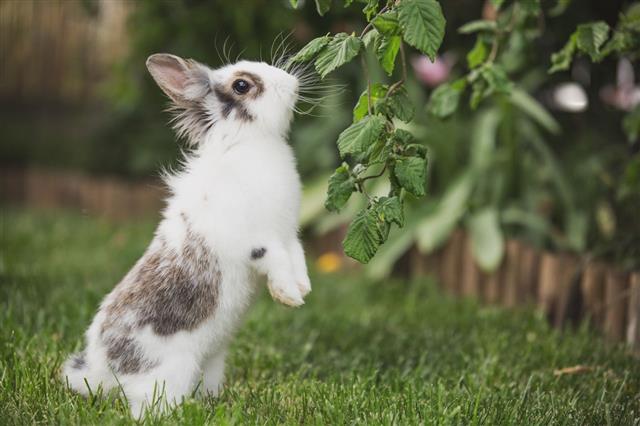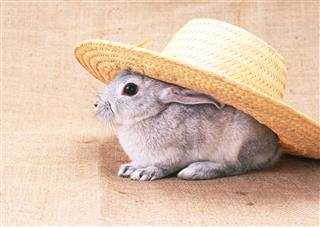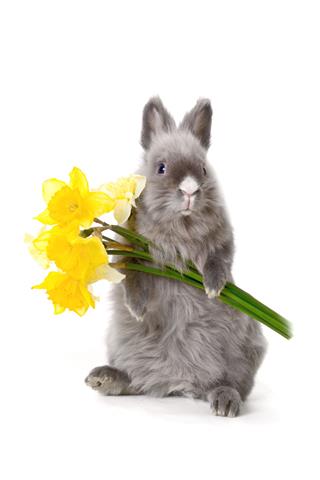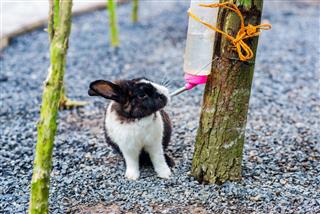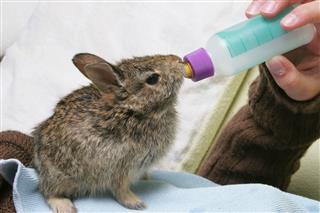
Rabbits are fascinating creatures and there are so many things about them that most people are unaware of! This article takes a look at some amazing facts regarding rabbits, and the things that make them unique and one of their kind!
Did you know..?
In the United States alone, there are more than 2 million households that have pet rabbits! Rabbits are also the third most favorite pet in the United Kingdom, after dogs and cats!
Many people would love to have a pet rabbit of their own. The size of rabbits can be misleading and can make people think that they are easy to look after. But that is far from the truth. It takes a lot of work and effort to look after and manage a pet rabbit. Rabbits have very delicate digestive systems which can get disrupted due to slight changes in their diet, requiring immediate veterinary care. Rabbits also require grooming on a weekly basis, because they have a tendency of swallowing their own hair while grooming themselves. This can lead to digestive problems later on, as they are unable to spit out the hair. Here are some more equally fascinating facts about these adorable creatures.
Facts About Rabbits
- They are not rodents. They belong to the order lagomorphs.
- Rabbits are herbivores and eat carrots, vegetables, tree bark, weeds, and herbs.
- Domestic rabbits will require leafy greens and fruits incorporated in their diet to keep them healthy.
- Contrary to popular belief, only carrots and some fruits cannot provide your pet rabbit with all the nutrients it needs to stay healthy and fit.
- A diet consisting mainly of carrots may make the rabbit malnourished.
- They are social, loving, and interactive animals.
- They live in groups called herds, in a warren. A warren is a huge maze-like underground dwelling for rabbits.
- Rabbits weigh between 2 to 11 pounds. However, this is an average estimate. The world record for the heaviest rabbit is set at 50 pounds, while the smallest recorded rabbit weighed only 60 grams! There are over 45 recognized breeds of rabbits.
- Rabbits have a thin skin that can easily suffer tears, which is why they have a dense fur. They shed their coats twice annually.
- Rabbits have a very good memory. And each rabbit has his own distinct identity and personality.
- Rabbits have long sensitive ears, which can turn in any direction and can also help in regulating their temperature.
- Rabbits are crepuscular, that is they are most active at dawn and dusk.
- Rabbits sweat only through their paws.
- They have 28 teeth, which keep growing throughout their life.
- Rabbits do not have equal number of toenails on all their paws. They have 5 toenails each on their front paws, but only 4 toenails each on their hind paws.
- Rabbits have a wide vocal range. They use different sounds in different tones and volumes for communicating various emotions.
- Rabbits have a 360 degree vision, and can see things behind them without turning around! They have just one blind spot which is right in front of their nose.
- Rabbits have 3 pairs of scent glands. One located under the chin, another on either side of the anus, and the third in the inguinal region (called inguinal glands).
- A male rabbit is called buck, a female one is called doe, and a baby rabbit is called kitten or kit. After birth, the baby rabbits are collectively known as litter.
- Rabbits can start mating as soon as they are 3 months old, and at 6 months old they are physically mature to produce offspring!
- One litter usually has 4 – 12 kittens (although it can vary according to the breed), and in the wild a doe can have as many as 8 litters per year! They can produce around 40 – 60 offspring in one season which lasts for around 9 months per year.
- The gestation period of rabbits is about 30 days.
- Kittens are blind when they are born, and they open their eyes at 10 days old. They have no fur at the time of birth.
- Kittens need to be fed only for a few minutes a couple of times per day. They are weaned when they are around 6 – 8 weeks old.
- Rabbit’s milk is very rich in nutrients and is considered very healthy.
- Rabbits can jump as high as 3 ½ feet, and as long as 10 feet! And they can run at about 35 miles/hour.
- Rabbits have very frail backbones, which are very susceptible to breaking if they are manhandled.
- The average lifespan of a rabbit is about 10 years.
- Rabbits are very susceptible to extreme temperatures and can suffer from a heat stroke.
- Rabbits chew 120 times a minute and have over 17,000 taste buds.
- Domestic rabbits cannot breed with American wild rabbits due to genetic differences, but can breed with European wild rabbits!
- Rabbit meat is all white meat, which means it is low in cholesterol, fat, and calories as compared to beef, pork, etc.
- Rabbits can’t vomit, but they excrete two types of droppings.
- The night droppings of rabbits are called cecotropes, and they are very rich in nutrients (proteins, minerals, and vitamins), which is why rabbits eat their own night droppings. Their droppings also serve the purpose as an excellent garden fertilizer.
- Happy rabbits express their joy by performing a series of jumps, twists, and runs, which is termed as binky.
- Spaying/neutering a rabbit contributes in maintaining good health and curbing the number of offspring produced, but is not essential.
- They require a four hours exercise a day. They can suffer from osteoporosis if they don’t get enough exercise.
- Rabbits don’t like being picked up.
- Rabbits groom themselves, and usually each other as well to socialize. They love spending time with other rabbits.
- Rabbits have pretty strong hind legs which they use to kick and lash out if they are captured or feel threatened.
- Rabbits purr. But unlike cats, who make the noise to communicate, rabbits produce a soft purring sound when they grind their teeth together.
- It is important to keep 2 or more rabbits if they are being kept as pets. They are social animals and not suitable for domestication. Loneliness can cause depression, aggression, and other behavioral problems. They need company.
Who knew these cute little bundles of fur have so many fascinating things about them? But there is something about them that is a cause of distress. They breed extremely rapidly, causing a problem of overpopulation in many parts of the world. It is reported that in Australia alone, rabbits annually destroy crops worth around $500 million! This makes them rather troublesome creatures to deal with and as a result, there are many incidents of rabbit snaring, shootings, and killings. If they are spayed or neutered, this problem could be brought under control.



